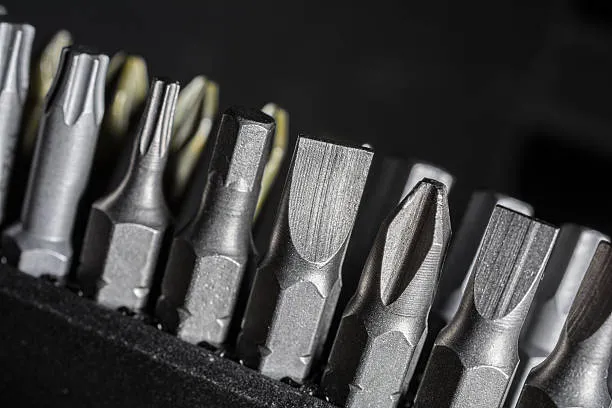Understanding Screw Head Drill Bits

Having the right screw head bit for the job can make a project either much easier or much more difficult. It is important to make sure you understand the type of material you're screwing into to help you choose the type of screw you will be using. From there you want to make sure you use the right size bit head, otherwise you risk stripping your screw which will make a project drag out longer than it needs to be.
Why Choosing The Right Bit Is Important:
Choosing the right bit is important because if you don't have the right size, you risk stripping the screw head. Stripping a screw is the result of either usage of the wrong size bit or going too fast with a drill to unscrew the screw which ends up destroying the bit placement on the screw head and makes it virtually impossible to do anything with the screw at that point. The reason it's important to keep the bit placement on the head of the screw intact as best as possible is because the placement area allows the bit to grip onto the screw. If you eliminate that grip and make it smooth, you will not be able to get the screw to move in either direction. That is why it is important to try your best to use the right bit size and to start slowly with the drill speed to confirm that the screw is moving. If the screw is not moving but the bit head is and appears to almost jump the bit placement area of the screw, stop immediately and confirm you have the right bit size. If you don't stop, you risk stripping your screw head. It is also important to understand what material you are trying to work with so you know what type of screw or drill bit to use to help avoid stripping screw heads and making a job much more easier and enjoyable. There are many types of bits for different types of projects, so let me go over a few to help get a better understanding of the type of bit you might need.
Phillips and Flat Head Bits:
The first bit types I will cover are your standard Phillips head and Flat head bits. These bits will most likely be used the most frequently, more specifically the Phillips head. As a Reminder the Phillips bit looks like a plus sign(+) and a Flat Head bit looks like a minus sign(-). These will be the most common you'll use because most screw heads you'll use will have this type of head.
Star/Torx Head Bits:
If your project requires a heavier duty screw that needs to drive a little deeper into harder material than a standard Phillips Head Screw can handle, then you'll most likely need a Star bit which is more formally known as a Torx Bit. A Torx bit has a star pattern head to it to help keep a stronger grip on the groves of a screw head to avoid Stripping a screw. The benefit of using a Torx bit over a Phillips is that a Torx bit allows more torque to be applied to the screw, meaning that it will have a stronger bond with the material you're working with. This is because the star pattern adds 2 more grooves than the Philips head to allow for a stronger grip meaning that it has a lesser chance of stripping a screw then a Phillips would.
Hex Head Bits:
Hex head bits will most likely be used on projects where you don't need a screw with a point like a wood screw, sheet metal screw, or concrete screw, which also means you will be screwing these hex head screws into pre drilled holes. The most common usage of these types of screws are on furniture, bikes, and other products that require assembly. As the name suggests the Hex Head Bit has a hexagonal head, 6 sided head. Most products that require assembly will come with an Allen Wrench which comes as a hex headed “L” shaped wrench. Although Allen wrenches work really well, they can get tiresome and become a pain if you are having to use a lot of screws, so having a set of Hex Head Bits for your drill or Impact driver is always a good idea to help speed up the assembly process.
If you made it this far, thank you for reading. I hope I was able to help better your understanding of the significance of understanding the different types of Screw Head Drill Bits. For more articles like this, please subscribe so you don't miss out.



